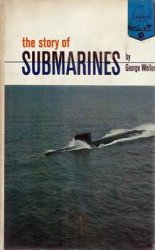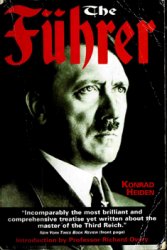The second ATR42 arrives in January 1986 and the third in August. Late in the year, Hans Nielsen succeeds his father as company president, although the founder remains chairman. All top posts continue to be occupied by Nielsen family members.
Dagali joins the route network in 1987 as the F.28s return from the Middle East. Passenger and cargo service begins to Esbjerg and Humberside in 1988.
Airline employment is increased by 16.7% in 1989 to 105 and, to handle an increased traffic load, a fourth ATR42-200 is placed in service. Enplanements reach 126,817, a 44.3% boost while freight climbs 6.9% to 61,640 pounds.
The fleet in 1990 includes 2 F.28s, 4 ATR42-200s, and 2 Nord 262s. As the world airline recession hits, this company, like many others, begins to suffer traffic and fiscal downturns and stops reporting its figures.
During 1991, 3 more ATR42s, Dash-320s, join the fleet. The Danair, A. S. Sonderborg-Copenhagen service continues in 1992, as does a route from the base city to Montpellier.
A large number of replacement services are also flown for the Deutsche Lufthansa, S. A. subsidiary Lufthansa CityLine, mbH.
These are launched from Kiel to Frankfurt, Paris, Berlin, Munster, Cologne, Osnabruck, and Lyon and from Berlin to Bremen employing 6 ATR42-320s leased from Cimber.
In 1993, airline employment at Chairman Nielsen’s carrier stands at 226 and the fleet comprises 2 Nord 262s, 8 ATR42-320s, including the 6 out with Lufthansa Cityline, mbH., 1 Beech Super King Air 200, and 1 Dassault Falcon 20.
One of the ATR42-320s is leased to the new Swedish regional Holm-strom Air, A. S. in 1994. The Falcon is replaced with a Cessna 501 Citation I, while the Nords and King Air are retired. Operations continue apace in 1995 as the company orders 5 ATR42-520s. Four ATR42-320s are chartered to Lufthansa Cityline, mbH. Enplanements, reported for the first time this decade, total 100,533.
Airline employment stands at 230 in 1996 and the fleet includes 7 ATR42-320s, including the 4 still with Lufthansa Cityline, mbH. and the Cessna 501 Citation I. The first 2 ATR42-520s are delivered, 1 each in February and April. Passenger boardings skyrocket 81.1% to 531,917.
Having proven unprofitable, the year-old return route from Copenhagen to Newcastle operated by SAS Commuter, A. B. is turned over to Cimber Air on April 1, 1997.
Also during the spring, a German subsidiary, Cimber Air, GmbH., is established at Kiel. Destinations now visited also include Aalborg, Aarhus, Copenhagen, Karup, and Sonderborg.
Enplanements for the year climb to 717,000.
Cimber Air Holdings, A. S., the airline’s parent, sells a 26% equity stake to SAS (Scandinavian Airlines System) in June 1998 to strengthen its domestic code-share partnership with the major.
The third ATR42-520 is delivered in early 1999. It is placed into service on the route from Copenhagen to Karup. On March 29, the five-times-a-day nonstop MD-81 return service from Copenhagen to Karup, Denmark, provided by SAS (Scandinavian Airlines System) is discontinued and replaced by ATR-520s of Cimber Air, which operate an equal number of turboprop flights.
Through September, the company receives 3 ATR72-520s, several in “Team Lufthansa” colors. In October, one of the ATR42s is employed to launch five-times-a-day roundtrips between Copenhagen and Esbjerg Airport. The following month, a firm order is placed for 2 Canadair CRJ200ERs, along with 4 options.
Wearing “Team Lufthansa” livery, the first CRJ200ER is received on August 10, 2000.
CIMBER AIR, GmbH.: Flugplatz Kiel Holtenau, Kiel 17, D-2300, Germany; Phone 49 (431) 323 656; Fax 49 (431) 321 420; Code QI; Year Founded 1997. Cimber Air, GmbH. is established at Kiel Airport in the spring of 1997 as a subsidiary of the Danish airline. Bernd Luetticke is named managing director and he begins domestic services with a single Aero International (Regional) ATR42-320.
Destinations visited in 2000 include Berlin, Bonn, Bremen, Cologne, Dortmund, Kiel, and Nuremberg.
CINCINNATI AIRLINES: United States (1969-1970). Established at Lunken Airport and named in honor of its base city, Cincinnati Airlines initiates daily Cessna 402 passenger roundtrips to Cleveland’s Lakefront Airport in 1969. The trans-Ohio shuttle is only maintained into 1970.
CINTA (COMPANIA NACIONAL DE TURISMO AEREO, S. A.): Chile (1953-1957). Following a decision by the Chilean government in early 1953 to allow the start-up of private airlines, CINTA is formed by the air carrier specialist, Jorge Carnicero, at Santiago in November as a division of the Compania Sud Americana de Vapores steamship line. After acquiring a fleet of 3 Lockheed Model 18 Lodestars and 2 ex-LanChile Airlines (Linea Aerea Nacional Chile, S. A.) Lockheed Model 10A Electras, the carrier begins domestic passenger and freight service in 1954.
After a year of successful operations in 1955, weekly Miami to Santiago flights are initiated on October 26, 1956. Late in the year, Car-nicero persuades the company’s directors that tourist dollars could be made if charter flights were undertaken to and from the U. S.
As a result, 2 Douglas DC-3s and the first of 4 DC-4s are purchased from United Air Lines and in October 1957 are employed to initiate low-cost, roundtrip Inter-Americano services to Miami via Antofagasta, Arica, Talara, and Panama City. Somewhat overextended in a slender market, CINTA, in December, merges with another new Chilean entrant, ALA (Sociedad de Transportes Aereos, S. A.).
CIRCLE RAINBOW AIR: United States (1983-1995). Honolulu-based CRA begins interisland air tours, flight-seeing, and passenger charters in 1983 with a fleet of 3 Beech 18s.
A decade later in 1994, President M. Otsuka’s company employs two pilots and owns a fleet of 5 Pilatus-Britten-Norman PBN-2 Islanders. Operations cease in 1995.
CIRRUS AIR: 8605 Lemmon Avenue, Dallas, Texas 75209, United States; Phone (214) 358-3174; Fax (214) 358-0430; Http://www. aerosearch. com/companies/cirrus; Code BS; Year Founded 1976.
Reggie Parson establishes Cirrus as an independent FAR Part 135 charter operator at Dallas (DAL) in 1976 to offer charter and contract service all-cargo flights. Operations commence with a fleet of 13 Beech 58 Barons, 5 Beech 36 Bonanzas, 2 Cessna 402s, 2 Cessna 401s, and
1 Cessna 210.
Operations continue over the next two decades, during which time the company also establishes hubs at New Orleans, Albuquerque, Midland, San Antonio, and Amarillo. In 2000, John R. K. Tinkle is chairman/ president and the company flies from Dallas a mixed fleet of 4 Barons,
2 Bonanzas, 1 Cessna 402, and 1 Mitsubishi Mu-2.
CIRRUS LUFTFAHRTGESELLSCHAFT, mbH.: Flughafen Saarbrucken, Saarbrucken, D-66131, Germany; Phone 49 6893986037; Fax 49 6893-83318; Http://www. cirrus-airlines. de; Code C9; Year Founded 1990. The German Cirrus is established in 1990 to provide fleet management, executive, and small group passenger charters. The company employs six pilots by 1998 and at Stuttgart Airport bases 1 each Cessna 551 Citation II, Piper PA-34 Seneca, and Beech Super King Air 200. Additional small aircraft are housed at Saarbrucken.
In March, the company receives government authority to operate scheduled services. Two de Havilland Canada DHC-8-100s are leased and employed to initiate roundtrips from Karlsruhe and Baden to Berlin and from Saarbrucken to Leipzig, Dresden, and over the border to Salzburg.
Enplanements during the 12 months total 21,000.
During 1999, Cirrus becomes a “Team Lufthansa” partner and, in the fall, places a firm order and two options with Embraer for a regional jet.
During the first quarter of 2000, Dash-8 “Team Lufthansa” flights commence from Saarbrucken to Dresden and Mannheim.
The company takes delivery of an ERJ-145 at the beginning of April. After workup, it is placed on the “Team Lufthansa” route between Dus-seldorf and Birmingham on April 24.
DHC-8-100 roundtrips from Berlin to Karlsrugh and Baden-Baden are launched on May 15. New “Team Lufthansa” Dash-8 service is started on June 2 from Saarbrucken to Leipzig via Dresden.
CISKEI INTERNATIONALAIRWAYS (PTY.), LTD.: South Africa (1988-1989). M. L. Potter establishes CIA at Bisho, the capital of the black African homeland of Ciskei, situated within the borders of the Republic of South Africa, in 1988. One each Convair CV-880 and CV-990A Coronado are acquired.
Revenue flights linking the company’s base with Johannesburg are started by the Coronado late in the year; however, the airline is not viable and it is shut down in 1989 and the two aircraft are put up for sale.
CITI AIR (PTY.), LTD.: South Africa (1985-1990). Margate Air (Pty.), Ltd. is reformed in August 1985 and moved to Durban, where it begins operations under the name Citi Air (Pty.), Ltd. D. White is chairman, with S. Ord as managing director.
Employing 1 Piper PA-31-350 Navajo Chieftain, Cessna 402B, and 2 Piper PA-28 Cherokees, scheduled feeder services are continued by the 10-worker company to Ladysmith, Margate, Nelspruit, Newcastle, and Vryheid.
Over the remainder of the decade, the fleet is enhanced by the addition of 1 Cessna 402B, 1 Cessna 310, and 2 Cessna PA-32 Cherokee Sixes while Pietermaritzburg and the Transkeian capital of Umtata join the route network. Early in 1990, the company is combined with East London-based Border Air (Pty.), Ltd. and Magnum Airlines (Pty.), Ltd. of Johannesburg to form Link Airways (Pty.), Ltd.
CITY AIR SCANDINAVIA, A. B.: Sweden (1992-1993). City Air Scandianavia, A. B. is established by former SAS (Scandinavian Airlines System) executives Bosco Janzon and Peter Hilgsoe at Malmo in early 1992 to provide scheduled passenger services to destinations in Sweden, Norway, and Denmark. Janzon, the founder and shareholder, becomes chairman and Hilgsoe becomes managing director. On February 11, they purchase the assets of Malmo Aviation, A. B. from Salenia A. B., recruit a workforce of 220. They assemble a fleet of 5 leased British Aerospace BAe 146-200s, as well as a BAe 146-200QT and a Dash-300QT that are operated under contract to TNT Express Worldwide. There is also a leased Fairchild Hiller FH-227E.
While the new City Air title is litigated with another carrier in court, passenger flights begin in March under the Malmo Aviation, A. B. moniker linking the company base with Stockholm, Oslo, Copenhagen, and other Nordic destinations.
Twice-daily flights are inaugurated on June 28 between Stockholm and London (LCY). CAS is the second company to begin flying BAe 146s into the new downtown British facility. TNT Express Worldwide cargo runs are made between Cologne and eight Scandinavian destinations. In December, orders are placed for 5 British Aerospace RJ85s; they will be delivered in 1994-1995.
A new route is initiated early in 1993 from Bromma Airport to Malmo. Financial problems take central stage as increased fees at domestic airports, depreciation of the Swedish krona, and fare dumping by other airlines conspire to push the company toward bankruptcy. In the early spring, Chairman Janzon and Executive Director Hilgsoe propose the elimination of the service between Stockholm and London (LCY).
On April 15, the carrier goes under; the next day it is purchased by Viklund Crafoord, owner of Viklund Inter Trade, A. B., and is provided with a new corporate identity, livery, logo, uniforms, etc. under the name
Malmo Aviation Schedule, A. B.




 World History
World History









